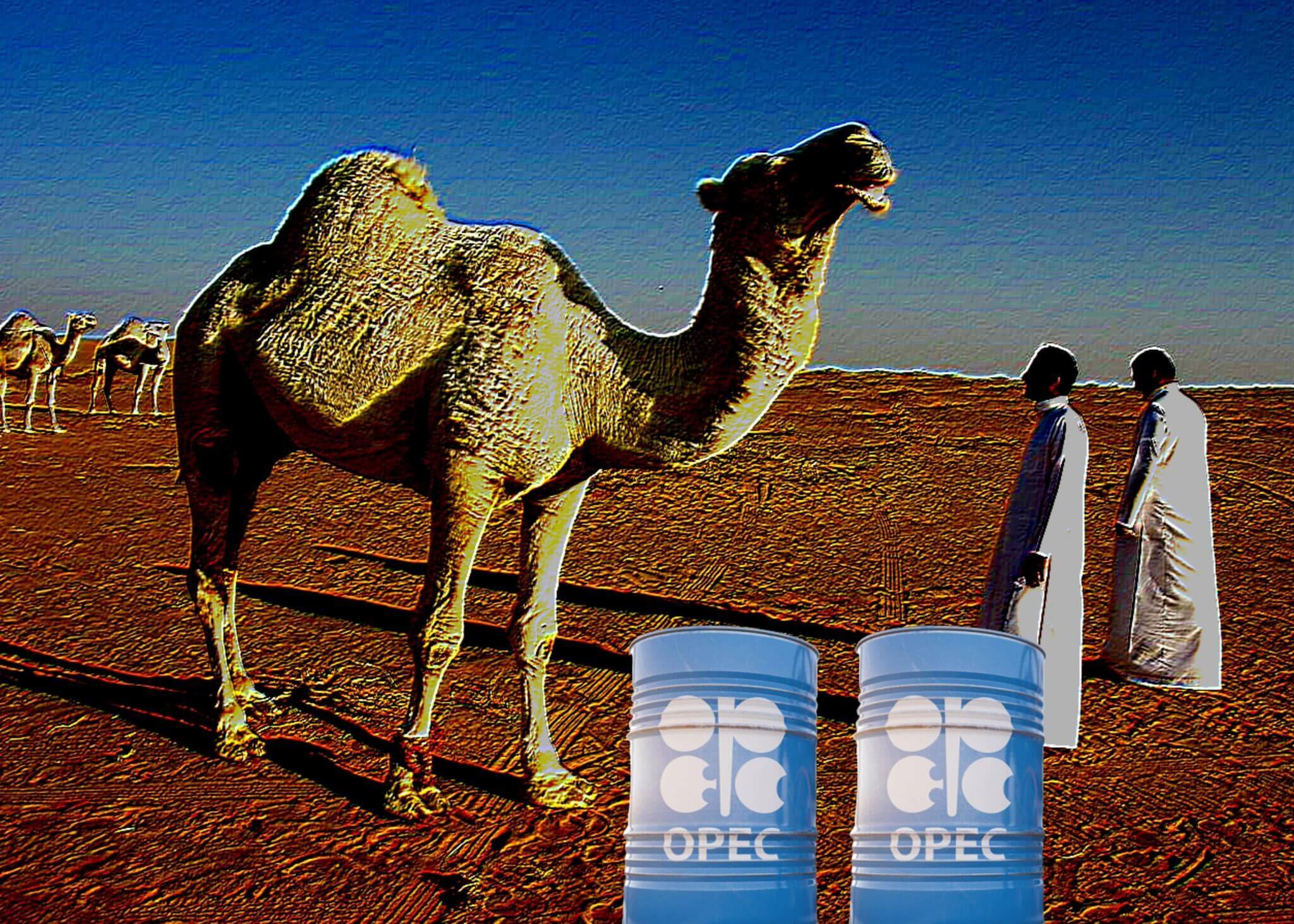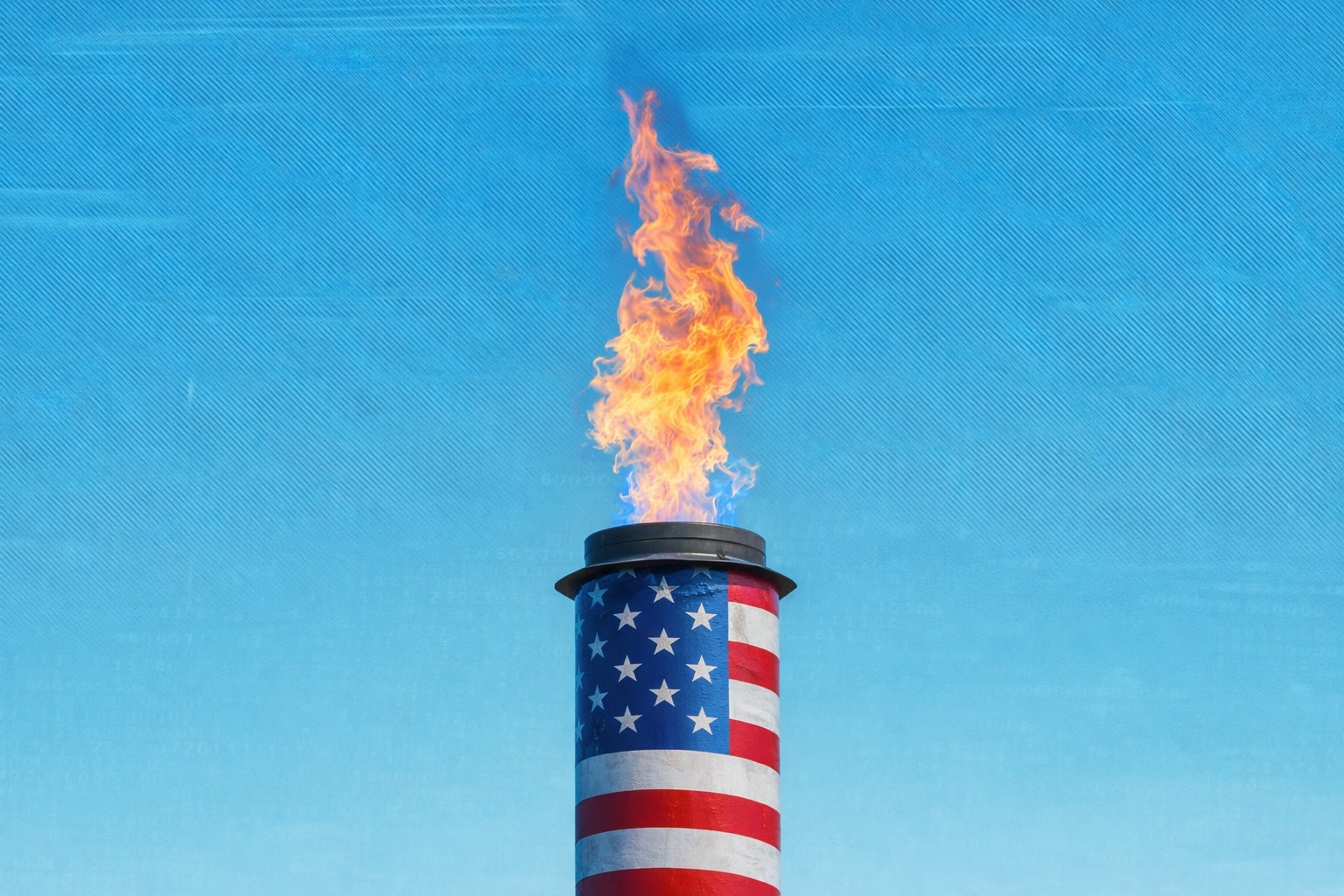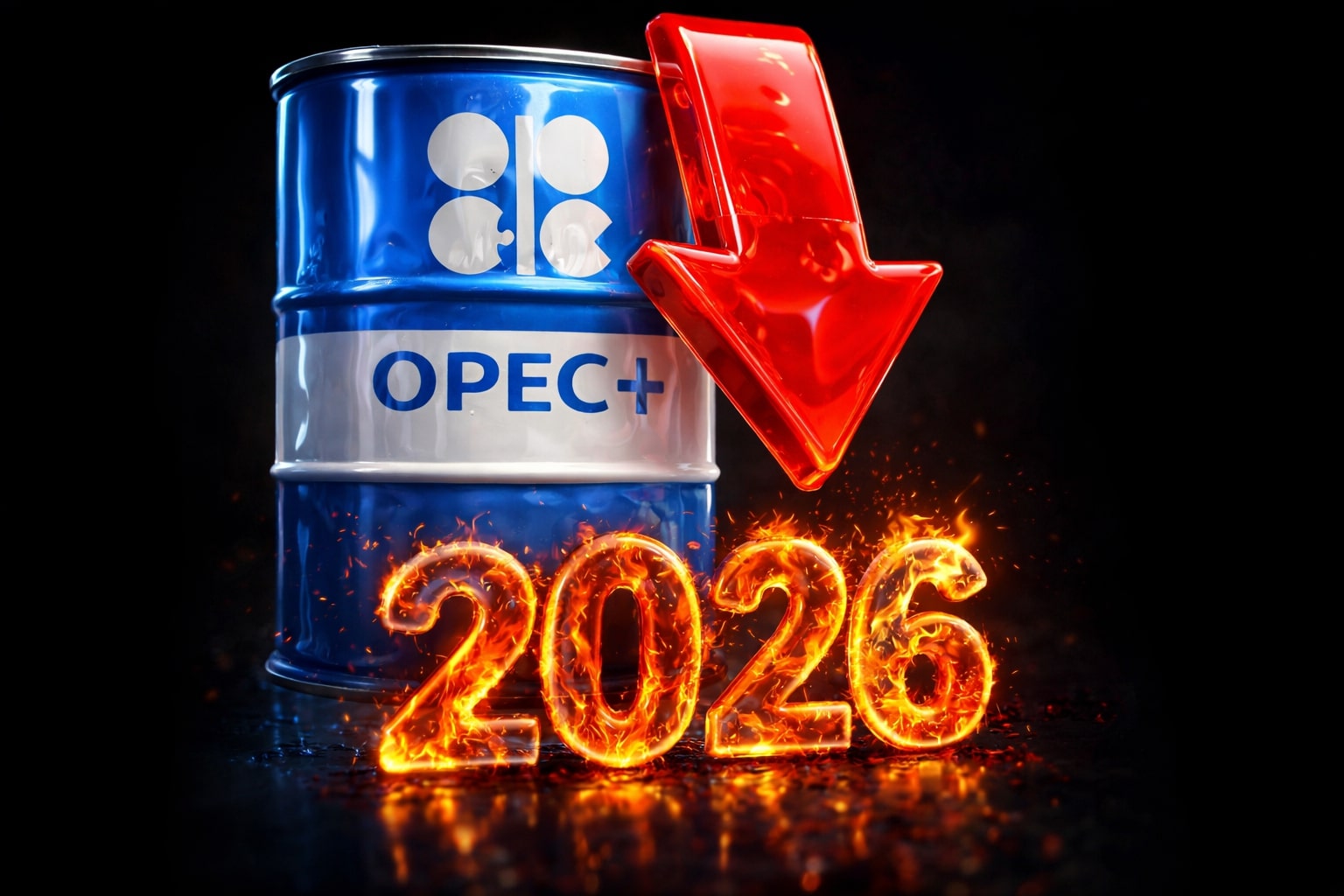
Global Oil 23 Complex Interplays and Implications
From Powell's Policy Projections to OPEC's Dominance: Deciphering the Tumultuous World of Oil Prices and Production | That's TradingNEWS
The Dance of Oil Prices: Interplay of Supply, Demand, and Global Influences
The Current Landscape: Prices and Projections
Oil trading commenced on a Friday with Brent crude hovering over $83.88 per barrel and the West Texas Intermediate nearing $79.60 per barrel. However, by week’s end, both experienced a decrease in value by 1.5% to 2.5%. This comes as the U.S. dollar gains traction, thanks to investor apprehension preluding a crucial speech by Fed Chair Jerome Powell. The annual Jackson Hole address by the Fed’s head can set monetary policy direction. Observers are split: some anticipate a departure from the past year's approach, while others await cues in line with the Fed's existing strategy.
Monetary Policy: Decoding Implications for Oil
Powell's address at the Jackson Hole retreat holds immense weight. If he projects a relaxed attitude, it signals confidence in the U.S. economic recovery, hinting at potential growth in oil demand. However, if Powell leans towards the Fed's hawkish approach, it may exert additional downward pressure on oil prices.
Supply Dynamics: Global Players and Potential Changes
Supply considerations reveal interesting trends:
- The market may soon witness an influx of oil from Venezuela, Kurdistan, and Iran.
- Equinor has expedited production at its Statfjord Ost field, starting six months ahead of their original plan.
- Saudi Arabia's influence on international oil prices via production cuts is believed to have plateaued.
Analysts from Haitong Futures highlighted, as reported by Reuters, that the support oil prices once received from prior production cuts has waned. They now look to Saudi Arabia to prolong its voluntary output reductions. Contrarily, Warren Patterson from ING, cited by Bloomberg, suggests that despite potential supply growth from certain OPEC producers, inventory draws might persist through the year, presenting further upside risk for prices.
China's Economic Recovery: Impact on Oil
China's unanticipated slow economic recovery has clouded oil market sentiments. A once-predicted driving force for oil demand in 2023’s latter half, China's underwhelming performance has influenced price movements. Despite a strong dollar and demand concerns pushing oil prices down, reports of dwindling gasoil stocks in Europe led to a swift rebound. Insights from Dutch firm, Insights Global, further fortified this trend, showcasing a 3% dip in gasoil reserves at the Amsterdam-Rotterdam-Antwerp refining and storage hub.
European Market Shifts and the U.S. Federal Reserve
European stock reductions and fluctuations in 2-year U.S. treasury yields have likely spurred oil prices. Investors, particularly, are awaiting further clarity on the U.S. Federal Reserve's next strategic moves. Japan and the Euro zone are battling economic contractions, and Britain’s economic trajectory seems to tilt towards a contraction this quarter.
Investment and Production: The Road Ahead
Post numerous warnings concerning inadequate investments in new exploration, the oil industry has ramped up expenditures. Wood Mackenzie analysts highlight that the industry is amid an upcycle, forecasting new production investments at $490 billion this year, a noticeable jump from 2020’s $370 billion. Though investments are surging, they might not guarantee ample supply. However, cost reductions might bridge the gap, with the rise of U.S. shale and other non-OPEC sources taking center stage. These sentiments echo what U.S. oil executives conveyed recently: increased well yields due to technological advancements.
The Shale Landscape: Current and Future
Argus, citing Pioneer Natural Resources, underscores a notable uptrend in well productivity. In contrast, Bloomberg, referencing research from Enverus, indicated a faster depletion rate for shale wells, emphasizing the maturation of the shale patch.
OPEC’s Dominance Amidst New Entrants
Beyond U.S. oil, nations like Canada, Mexico, Brazil, and emerging producers like Guyana have significantly augmented global supply. Yet, OPEC's unified supply control policies render it the pivotal player in the oil domain. The BRICS expansion further enriches this landscape, incorporating large producers like Brazil and Argentina.
Investment Trends and Transition Push
Notwithstanding the transition push, global investments in oil and gas supplies are skyrocketing. Goldman Sachs recently highlighted 70 large-scale oil and gas projects in the global development pipeline, marking a 25% increase from 2020. Factors influencing this upsurge include the need to counteract the effects of prolonged underinvestment and adapting to anticipated shifts in the industry dynamics.
Peak Oil Demand: A Distant Horizon?
The concept of peak oil demand, driven by the transition to alternative energy sources, looms large in industry discussions. Yet, with current oil demand consistently breaking records, there's a palpable tension between supply and demand dynamics. The International Energy Agency predicts short-term demand growth, estimating daily demands surpassing 102 million barrels.
OPEC’s Strategy Amidst Growing Demand
In the meantime, OPEC retains control on output, with the flexibility for members, especially Saudi Arabia, to implement additional cuts to drive prices. With the BRICS extension, OPEC's role has, in a manner, expanded.
Global Investment in Oil and Gas
Goldman Sachs, in their recent analysis, underscored a significant surge in oil and gas projects under development globally. There are currently 70 large-scale projects, marking an impressive 25% uptick from 2020. However, 2020 wasn’t a typical yardstick given its atypical nature, especially outside of the IT sector. This increase in investment projects hints at a potentially optimistic future for the oil and gas sectors.
Yet, challenges from the seven-year-long underinvestment period persist. A decline in the life expectancy of both future and current projects was observed. But the current influx of investments may revitalize this landscape. In contrast, Wood Mac’s perspective emphasizes the oil and gas industry's imminent fundamental transformation driven by the anticipated peak demand and the transition to non-hydrocarbon energy sources.
According to industry analysts Fraser McKay and Ian Thom, the prevailing cycle won't culminate in a typical downturn as experienced in prior industry cycles. They attribute this to the looming prospect of peak oil demand. Such foresight will presumably urge oil and gas producers to maintain fiscal discipline in the long run. Yet, despite these concerns, there's a growing apprehension regarding the lack of buffer in production capacity.
Oil Demand: Current Projections
While many predict an imminent peak in oil demand, the reality is that global oil consumption is reaching unprecedented heights. The International Energy Agency, an advocate for transitioning away from fossil fuels, still projects an increase in short-term demand, estimating it to exceed 102 million barrels daily this year. This poses questions about the balance between global supply and demand.
Technological advancements have significantly bolstered production while concurrently cutting costs. For instance, the U.S. shale industry has reported higher than anticipated well yields due to these advancements. Pioneer Natural Resources confirmed that well productivity in early 2023 was notably higher than 2022's average. However, reports from Enverus reveal the opposite, suggesting shale wells are depleting faster, with limited unexplored reservoirs remaining.
Global Supply Contributors: Beyond OPEC
Beyond the U.S., countries such as Canada, Mexico, Brazil, and emerging players like Guyana have bolstered the global oil supply. However, OPEC remains dominant, owing much to its unified supply control strategies. The expansion of the BRICS consortium introduces an additional cluster of major global producers, with members like Brazil and Argentina playing pivotal roles.
Challenging Times: Unpredictable Factors Impacting Oil Prices
Oil futures witnessed a 1% rise, reaching a week's peak recently, influenced by soaring U.S. diesel prices, reduced oil rigs, and an unforeseen fire outbreak at a Louisiana refinery. The diesel futures surged by almost 5%, pushing refining profit margins to their highest since January 2023.
Marathon Petroleum's refinery in Garyville, Louisiana, saw a fire outbreak, further escalating global oil prices. As for drilling, Baker Hughes reported a consistent reduction in active oil rigs over the last nine months.
On the global front, weak economic indicators from Germany and the strengthening U.S. dollar following Jerome Powell's remarks on potential interest rate hikes further complicated the oil price trajectory. Higher interest rates could potentially hinder economic growth, subsequently diminishing oil demand. Conversely, a robust dollar could reduce demand by elevating oil prices for non-dollar currency holders.
Industry Projections: Analysts Weigh In
Morgan Stanley's team projects strong support for Brent prices around the $80 per barrel mark. They anticipate oil remaining in a deficit for 2023, with a shift to surplus expected by early 2024. Yet, oil broker PVM's John Evans believes this isn't a guaranteed outcome. Supporting this is Equinor's recent announcement of commencing production at its Statfjord Ost field, a full six months ahead of schedule.
In wrapping up, as the global oil landscape remains in flux, multiple factors, ranging from geopolitical events to technological advancements, continue to shape its future. Only time will tell how these myriad elements interact and ultimately steer the course of the industry.
Global Oil Landscape: Dynamics and Implications
The Current Landscape: A Week in Review
Oil markets started the week with Brent crude and the West Texas Intermediate standing at $83.88 and $79.60 per barrel, respectively. Yet, by the end of the week, they had decreased by up to 2.5%. This decline is attributed to the strengthening of the U.S. dollar and investors' anticipation of Federal Reserve Chair Jerome Powell's crucial annual speech at Jackson Hole. The importance of this address cannot be understated, as it often provides insights into upcoming monetary policy directions.
Monetary Policy: The Powell Effect on Oil
The Jackson Hole retreat serves as a significant bellwether for economic and policy forecasts. Powell's address can either indicate confidence in the U.S. economy, suggesting a potential upswing in oil demand, or veer towards the Federal Reserve's hawkish side, potentially adding more downward pressure on oil prices.
Supply Dynamics: The Changing Tides
Key developments have emerged on the supply front:
- The global oil market might soon see increased supplies from Venezuela, Kurdistan, and Iran.
- Equinor, defying expectations, has commenced production at its Statfjord Ost field half a year ahead of its initial timeline.
- However, the influential role of Saudi Arabia in dictating oil prices through production cuts seems to be reaching its zenith. While some analysts believe the nation should extend its voluntary output reductions, others anticipate that inventory draws might continue throughout the year, offering a potential upward push to prices.
China’s Role in Oil Demand
Initially forecasted to be a major demand driver in the latter half of 2023, China's slower-than-expected economic recovery has led to turbulent oil market sentiments. However, the European market's reduced gasoil stocks and a 3% decline in gasoil reserves at the Amsterdam-Rotterdam-Antwerp refining and storage hub offered a glimmer of hope.
Global Economy: Eurozone, Japan, and Britain's Economic Trajectories
Economic shifts in Japan and the Eurozone, along with Britain's potential economic contraction, paired with fluctuating U.S. 2-year treasury yields, have impacted oil prices. Investors remain watchful of the U.S. Federal Reserve's upcoming strategic decisions.
Investment Surge and The Road Ahead
Despite warnings about insufficient new exploration investments, the oil industry is witnessing a surge in expenditures. Predictions place new production investments at $490 billion in 2023, a remarkable leap from 2020's $370 billion. Wood Mackenzie emphasizes the ongoing industry upcycle. While the rise in investments is commendable, they might not necessarily translate to an abundance of supply. The rising prominence of U.S. shale and other non-OPEC sources might fill this supply void.
Shale Developments: Booms and Depletions
Reports on shale's future are mixed. Pioneer Natural Resources notes an uptrend in well productivity. Contrarily, Enverus' research hints at faster depletion rates for shale wells, indicating the industry's maturing phase.
Global Supply Framework: The Balance of Power
While countries like Canada, Mexico, Brazil, and Guyana augment global supply, OPEC's cohesion and unified supply strategies affirm its dominant position in the oil sector. The introduction of heavyweights like Brazil and Argentina via the BRICS expansion adds another dimension to the global production narrative.
Investments and The Energy Transition
Despite the global push for cleaner energy, investments in oil and gas supplies have surged. Goldman Sachs reports a 25% increase in large-scale oil and gas projects in development since 2020. This rise attempts to address the impacts of a prolonged underinvestment phase and to adapt to upcoming industry shifts.
Demand Peaks: Reality vs. Projections
The looming concept of peak oil demand contrasts sharply with current records. With daily oil demand forecasted to surpass 102 million barrels, the balance between global supply and demand becomes a critical point of contemplation. Technological leaps have bolstered production capabilities while also cutting costs, leading to fluctuations in supply dynamics.
Volatility Factors: Recent Oil Price Movers
Several factors contributed to the recent 1% peak in oil futures, including U.S. diesel price hikes, a reduction in oil rigs, and an unexpected fire at a Louisiana refinery. Additionally, global economic indicators and the U.S. dollar's performance after Powell's comments have added complexity to oil price predictions.
Expert Projections: Anticipating the Future
Morgan Stanley sees robust support for Brent prices around the $80 per barrel mark and expects oil to remain in a deficit throughout 2023. Conversely, PVM's John Evans remains skeptical about this outlook, especially with Equinor's Statfjord Ost field beginning production ahead of schedule.
That's TradingNEWS
Read More
-
SCHG ETF Near $33 High As AI Giants Drive 19% 2025 Rally
01.01.2026 · TradingNEWS ArchiveStocks
-
XRP-USD Stuck At $1.87 As XRPI Near $10.57 And XRPR Around $14.98 Despite $1.16B ETF Wave
01.01.2026 · TradingNEWS ArchiveCrypto
-
Natural Gas Price Forecast - NG=F Slides Toward Key $3.57 Support As Ng=F Extends 33% Drop
01.01.2026 · TradingNEWS ArchiveCommodities
-
USD/JPY Price Forecast - Yen Near 156 As Fed Cuts Meet Boj Hawkish Turn
01.01.2026 · TradingNEWS ArchiveForex



















